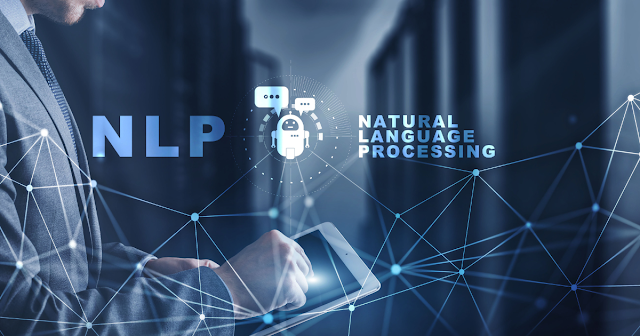The Software as a Service (SaaS) landscape is continually evolving, driven by emerging technologies and industry dynamics. Staying abreast of key trends is imperative for businesses to adapt, innovate, and remain competitive in the dynamic SaaS sector. Explore the forefront of SaaS evolution with these key trends shaping the industry.
AI and Machine Learning Integration
Intelligent Automation
The integration of Artificial Intelligence (AI) and Machine Learning (ML) into SaaS applications is gaining momentum. Predictive analytics, automated decision-making, and intelligent data processing are transforming SaaS platforms, enhancing user experiences, and optimizing workflows.
Personalization
AI-driven personalization is redefining user interactions within SaaS products. From tailored content recommendations to customized user interfaces, leveraging AI enhances user engagement by delivering a more individualized and relevant experience.
Edge Computing in SaaS Architectures
Decentralized Processing
The rise of edge computing is influencing SaaS architectures. Distributing computing power closer to end-users reduces latency, enhances real-time processing capabilities, and contributes to a more resilient and responsive SaaS infrastructure.
Improved Performance
By leveraging edge computing, SaaS providers can deliver improved performance for applications, particularly for users in geographically dispersed locations. This trend aligns with the demand for faster response times and a seamless user experience.
Cybersecurity and Data Privacy Focus
Enhanced Security Protocols
With the increasing frequency of cyber threats, SaaS providers are prioritizing cybersecurity. Implementing robust encryption, multi-factor authentication, and proactive threat detection measures are becoming standard practices in safeguarding user data.
Compliance Measures
As data privacy regulations evolve, SaaS platforms are placing a heightened emphasis on compliance. Adhering to frameworks such as GDPR and ensuring data residency compliance are critical for instilling user trust and meeting global regulatory standards.
Containerization and Microservices Architecture
Scalability and Flexibility
Containerization and microservices architecture are reshaping the scalability and flexibility of SaaS applications. Breaking down monolithic structures into modular components enables easier scalability, efficient resource utilization, and accelerated development cycles.
DevOps Integration
The adoption of container orchestration tools, like Kubernetes, facilitates seamless deployment and management of microservices. This integration supports a DevOps culture, where development and operations collaborate, fostering a more agile and efficient development pipeline.
SaaS for Industry-Specific Solutions
Vertical Specialization
SaaS providers are increasingly tailoring solutions to cater to specific industries. This trend involves developing specialized features and functionalities that address the unique needs and compliance requirements of vertical markets, ensuring a more targeted and impactful SaaS offering.
Niche Solutions
The proliferation of industry-specific SaaS solutions is providing businesses with niche tools that precisely align with their operations. Whether in healthcare, finance, or manufacturing, this trend ensures that SaaS applications are finely tuned to meet sector-specific challenges.
Voice and Conversational Interfaces
Natural Language Processing
The integration of voice and conversational interfaces is revolutionizing user interactions with SaaS applications. Natural Language Processing (NLP) enables users to engage with software through voice commands or text, providing a more intuitive and user-friendly experience.
Virtual Assistants
SaaS platforms are incorporating virtual assistants and chatbots powered by AI to enhance user support and streamline workflows. These conversational interfaces contribute to increased user satisfaction and efficiency.
Subscription Model Evolution
Flexible Pricing Models
The traditional subscription model is evolving to offer more flexibility. SaaS providers are exploring usage-based pricing, freemium models, and tiered plans to accommodate diverse user needs and offer more value-driven options.
Outcome-Based Pricing
Some SaaS providers are experimenting with outcome-based pricing, aligning costs with the specific results or value delivered to users. This approach ensures a more direct correlation between the value of the service and its pricing structure.
Remote Work and Collaboration Tools
Hybrid Work Solutions
The paradigm shift toward remote work has propelled the development of collaborative SaaS tools. Platforms offering virtual collaboration, project management, and communication solutions are evolving to meet the demands of hybrid work environments.
Enhanced Connectivity
SaaS providers are focusing on enhancing connectivity in their collaboration tools. Features such as virtual whiteboards, real-time editing, and integrated communication channels contribute to a seamless collaborative experience for remote and distributed teams.
Conclusion: Navigating the SaaS Landscape
As SaaS continues to be a driving force in the digital transformation journey, staying informed about these emerging trends is crucial. The convergence of technologies like AI, the evolution of architectural paradigms, and the industry's increased focus on security and personalization are shaping the future of SaaS. Businesses that embrace these trends are better positioned to navigate the dynamic SaaS landscape, offering innovative solutions and staying ahead in a competitive and ever-changing market.









